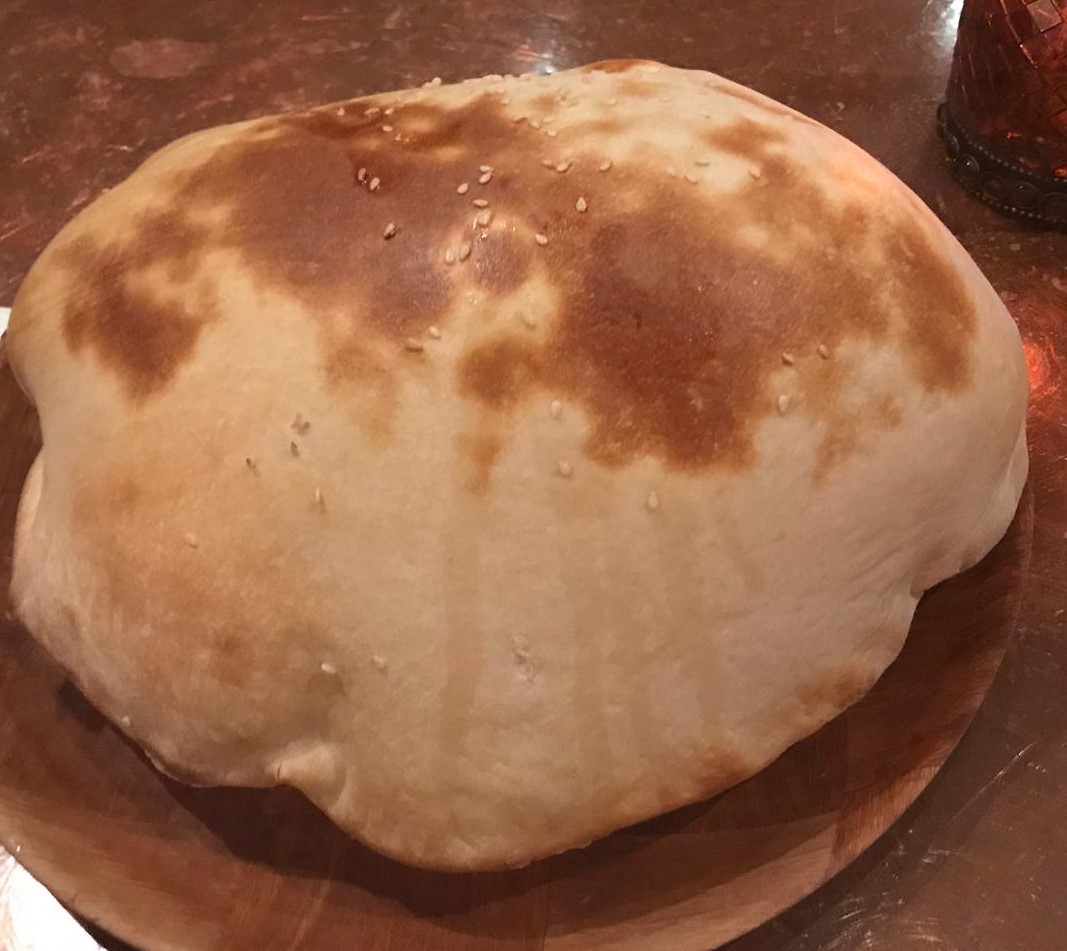If you’ve ever passed by a Turkish restaurant, you likely noticed a sizable, poofy dish often served as an appetizer. Ever wondered what it is? It’s Lavash. In the realm of Turkish cuisine, Lavash holds a special place as a thin, versatile flatbread. In this article, we’ll take you on a journey through the world of Lavash, uncovering its history, preparation, and the intriguing transformation it undergoes in the oven. This staple of Turkish culinary heritage is a testament to the artistry of bread-making. Beyond its delectable taste, Lavash exhibits a captivating change when it encounters the heat of the oven. Join us as we delve into the world of Lavash, exploring its roots, the meticulous process of its creation, and the fascinating secret behind its poofy, ethereal texture.
The Origin and Legacy of Lavash
In ancient times, when the culinary landscape was devoid of modern conveniences, the creation of Lavash was an art that required ingenuity and resourcefulness. Its origins can be traced back to the cradle of ancient civilizations, Mesopotamia, where early bakers, devoid of electric ovens, relied on innovative techniques to produce this beloved flatbread. They would skillfully knead the dough, using traditional methods passed down through generations, and then carefully roll it out into thin, delicate sheets. These sheets were placed on hot, smooth stones or clay surfaces, where they would quickly bake to perfection, acquiring that signature paper-thin texture.
As centuries passed, Lavash’s influence extended far beyond Mesopotamia, becoming an integral part of diverse regional cuisines. It found a cherished place in Turkish, Armenian, Persian, and Azerbaijani culinary traditions, a testament to its versatility and universal appeal. The first documented mentions of Lavash can be traced back to 17th-century Armenian manuscripts, further underscoring its enduring presence and significance in the annals of culinary history. This simple yet ingenious bread continues to captivate palates and hold a special place in the hearts of those who appreciate the artistry of traditional bread-making.
The Flour Powerhouse
Indeed, the essence of Lavash lies in the elegant simplicity of its ingredients. It starts with a harmonious combination of basic elements: wholesome wheat flour, water, and a subtle infusion of salt. It is in the alchemical hands of skilled bakers that these humble components are transformed into something extraordinary. The key lies in their expertise, as they deftly balance the proportions and work their craft to attain the ideal dough consistency. This is where the magic truly happens. With practiced hands, the dough is meticulously rolled out, achieving a delicate equilibrium between tenderness and structural integrity. It’s this precise balance that gives Lavash its signature texture – a sublime fusion of lightness and strength that sets it apart in the realm of flatbreads. The result is a culinary masterpiece that marries simplicity with artistry, making Lavash a true treasure of traditional bread-making.
Lavash: The Art of Rolling
Central to the enchanting texture of Lavash lies an artful process – the skilled technique of rolling out the dough. Bakers, with a practiced hand, expertly stretch and flatten the dough into exquisitely thin, delicate sheets. This precision is fundamental to achieving the characteristic ‘poof’ that Lavash undergoes in the oven. The thinness of the dough is paramount; it allows for the formation of pockets of air, giving rise to the delightful bubbles that grace the surface of Lavash.

Upon entering the searing embrace of the oven, the masterfully rolled Lavash dough embarks on a captivating transformation. The intense heat sets off a choreography of steam and expansion. Within the dough, water undergoes a swift conversion to steam, generating pockets that expand and contribute to the formation of those captivating bubbles. The result is nothing short of a visual masterpiece – an airy, almost ethereal flatbread that beckons both the eye and the discerning palate. This delicate dance of dough and heat is what imparts Lavash with its singular, captivating texture.
The Lavash Secret Unveiled
At the heart of Lavash’s enchanting poofiness lies a harmonious union between its thin, expertly rolled dough and the blistering heat of the oven. The dough’s delicate thinness plays a pivotal role, allowing the intense heat to rapidly permeate its surface. As a result, a remarkable alchemical process is set in motion.
Inside the searing oven, the combination of the thin dough and the high temperature triggers an infusion of steam within the bread. This transformative dance of heat and moisture is where the magic truly happens. The steam, generated by the water content in the dough, seeks escape, creating pockets of air within the Lavash. These pockets rapidly expand, resulting in the signature poofiness that distinguishes this flatbread.
Pairing Lavash with complementary flavors and textures is an art in itself. Its airy, yet sturdy texture makes it an ideal vessel for an array of delectable fillings. Try it with creamy hummus and fresh, crisp vegetables for a light and refreshing appetizer. Alternatively, use it as a wrap for savory grilled meats or roasted vegetables, adding a delightful crunch and nuttiness to every bite. The versatility of Lavash allows for a wide range of creative pairings, making it a canvas for culinary exploration.
Lavash bread at home
Creating Lavash bread at home is a gratifying culinary experience that brings forth the rich flavors of traditional Turkish cuisine. First, assemble your key ingredients: flour, water, salt, and a hint of olive oil. Blend them in precise measurements and knead the dough until it attains a smooth, elastic consistency. Let it rest briefly. Then, divide the dough into manageable portions and delicately roll them into thin, evenly-shaped sheets. This step demands a gentle touch and a touch of patience. The objective is to achieve that characteristic paper-thin texture that defines Lavash. Once rolled out, it’s time for the oven. Bake at a high temperature, around 475°F (245°C), and observe with wonder as the Lavash gracefully expands, revealing its distinctive, poofy texture. The result is a bread that delights the senses with its enticing aroma and offers a delightful, airy bite. Preparing Lavash at home isn’t just a cooking venture; it’s a tribute to a cherished heritage handed down through generations. Use a baking sheet or a pizza stone for best results.
Lavash, with its roots embedded in centuries of tradition, stands as a testament to the ingenuity and skill of bakers who have perfected this ancient technique. Its journey from unassuming dough to a marvelously poofy creation is a culinary spectacle. Savoring Lavash is not just a culinary experience; it is an immersion in the rich history and artistry that transcends time and culture.






